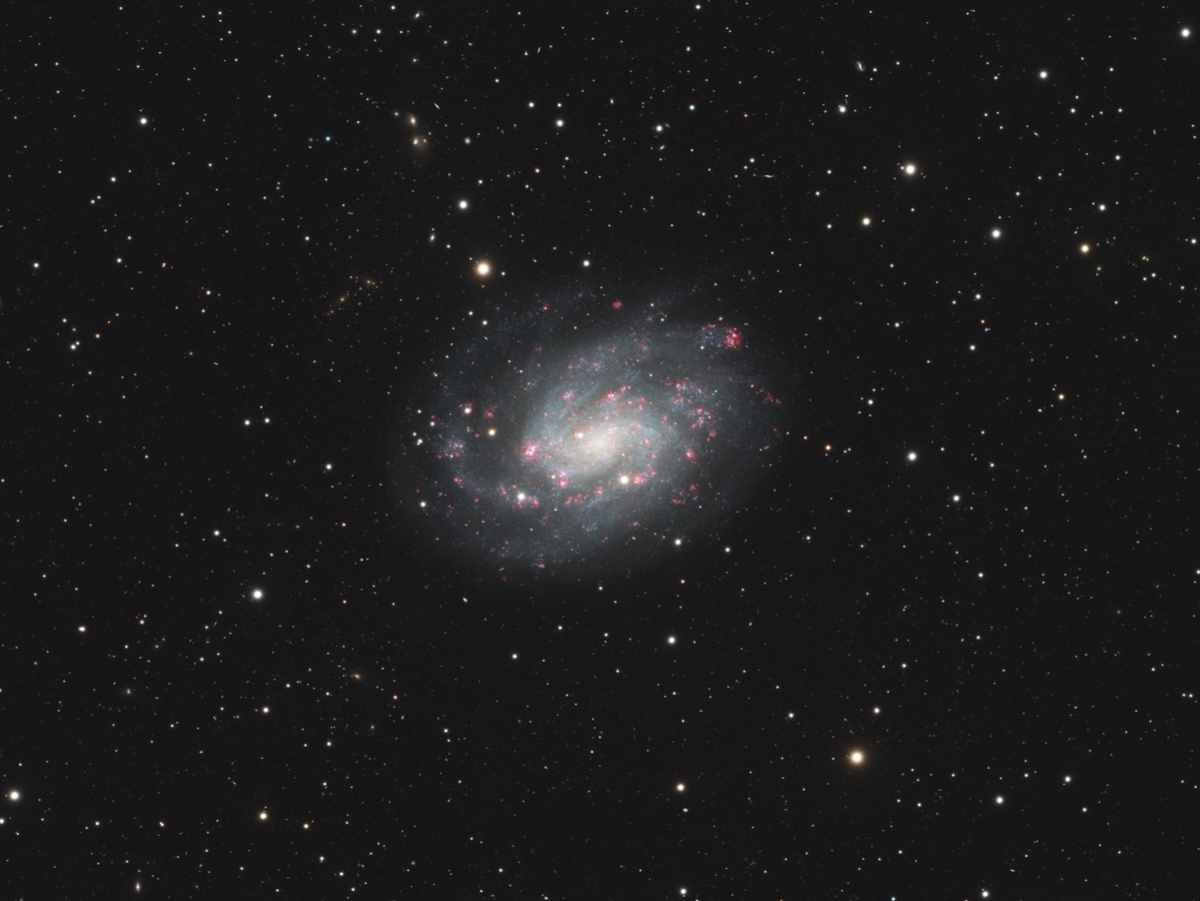
[back] NGC 300 (wide field) in Sculptor [NED]
Higher resolved uncroped image /
höher aufgelöstes unbeschnittenes Bild (9468 x 6262 Pixel)
Annotated uncroped image (9468 x 6262 Pixel)

|
Type: Scd |
|
300" |
|
(c) 2024 All astro photo images are copyrighted. They may not be used or reproduced without explicit written permission from the authors.
About this Image / Über dieses Bild
| Camera: | Moravian C3-PRO-61000 Mono CMOS |
| Image Type, Orientation: | L-(R+Ha)GBColor Composite, North is at 12:00 |
| Exposure time: | L: 90*300 sec., R: 36 *300s, G,B: 25*300 sec. each, Ha: 44*900sec. (25:40h total) |
| Exposure date: | August 30th...September 7th 2024, 2024 |
| Location: | Capella Observatory South at Kiripotib Astro Farm, Namibia |
| Filter: | Astronomik Deep-Sky Deep-Sky RGB Filter plus 6nm Ha filter on Moravian EFW-3L-9-II External Filter Wheel |
| Instrument: | "Callisto", a Takahashi FSQ 106N, 530mm focal length, 106mm aperture, f/5 on modified Losmandy G11 (high res encoders with OnStepX) |
| Photographer: | Rainer Raupach, Josef Pöpsel, Frank Sackenheim |
|
Remarks: |
NGC 55, the “String of Pearls
Galaxy”, and NGC 300, the “Sculptor Pinwheel Galaxy”, are two spiral
galaxies located in the constellation of Sculptor in the southern sky. At
distances of 6.1 and 6.5 million light-years, respectively, they are
relatively close to us. |
|
Bemerkungen: |
NGC 55, die
„Perlenschnur-Galaxie“, und NGC 300, die „Sculptor-Feuerradgalaxie“, sind
zwei Spiralgalaxien im Sternbild Bildhauer am Südhimmel. Mit 6.1 bzw. 6.5
Millionen Lichtjahren Entfernung stehen sie uns vergleichsweise nah. Lange bestand die Annahme, dass beide Galaxien Teil des Sculptor-Gruppe seien. Diese Vorstellung ist mittlerweile überholt. Neuere Messungen zeigen, dass beide Galaxien im Vordergrund und damit zwischen der Sculptor- und der lokalen Gruppe, zu der auch die Milchstraße gehört, liegen. Sehr wahrscheinlich sind jedoch NGC 55 und NGC 300 untereinander gravitativ gebunden. Im Lyons Group of Galaxies Katalog wird das Paar sogar als eigene Gruppe LGG 4 geführt, manchmal auch NGC 55-Gruppe genannt, da diese Galaxie die hellere der beiden ist. Während NGC 300 etwa die Größe der Milchstraße aufweist und 42° zur senkrechten Aufsicht geneigt ist, hat NGC 55 eine etwas geringere Größe und zeigt sich in Kantenlage. Optisch und auch von der Haupt-Klassifikation als Spiralgalaxie mit diffusen Armen ohne Ring (SA(s)d) ähnelt NGC 300 auffällig der Dreiecksgalaxie (M 33). NGC 55 ist dagegen eine Balkenspirale mit irregulären Armen (SB(s)m) asymmetrisch liegendem Bulge und unregelmäßig verteilten Sternhaufen und Emissionsnebeln. Das Basisbild erzeugt aus LRGB-Aufnahmen ist mit Schmalbanddaten nach Kontinuum-Subtraktion angereichert. Deswegen sind Emissionsgebiete deutlich hervorgehoben. NGC 55 zeigt, ähnlich zur „Zigarrengalaxie“ (M 82) HII-Bursts, die senkrecht zur galaktischen Ebene ausbrechen, und zudem insgesamt einen schwachen HII-Halo. Im Hintergrund der Widefield-Aufnahme sind unzählige weiter entfernte Galaxien und deutlich rotverschobene Galaxienhaufen zu erkennen. Nur die helleren sind Teil des PGC und auf der annotierten Version des Bildes markiert. |
Back to the Galaxies' Overview / Zurück zur Galaxien-Übersichtsseite